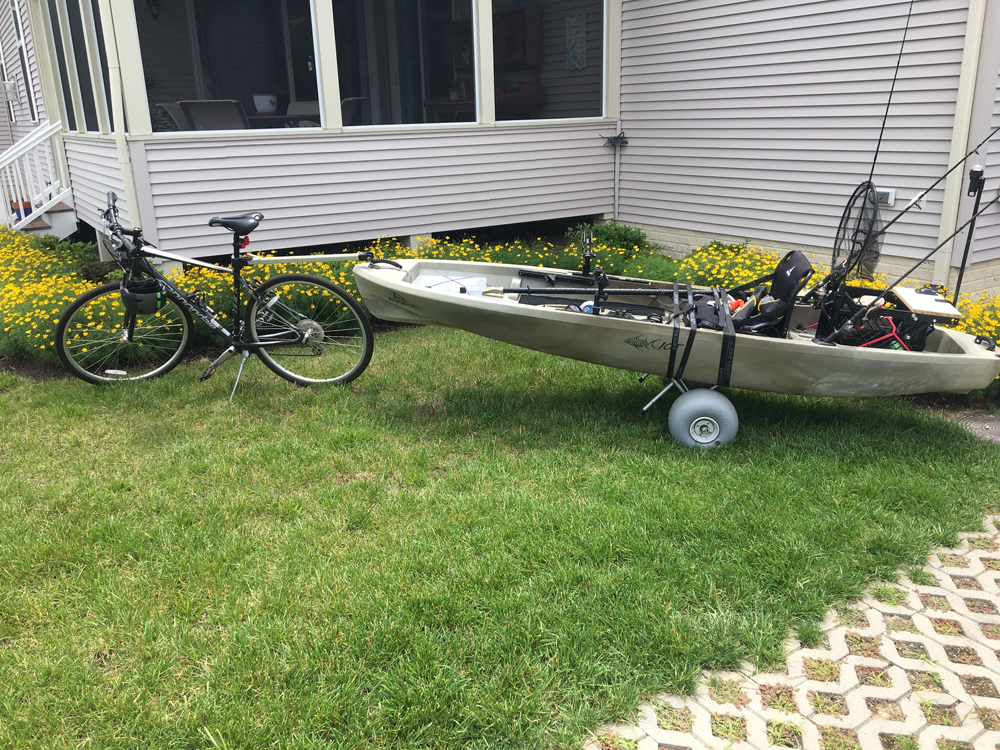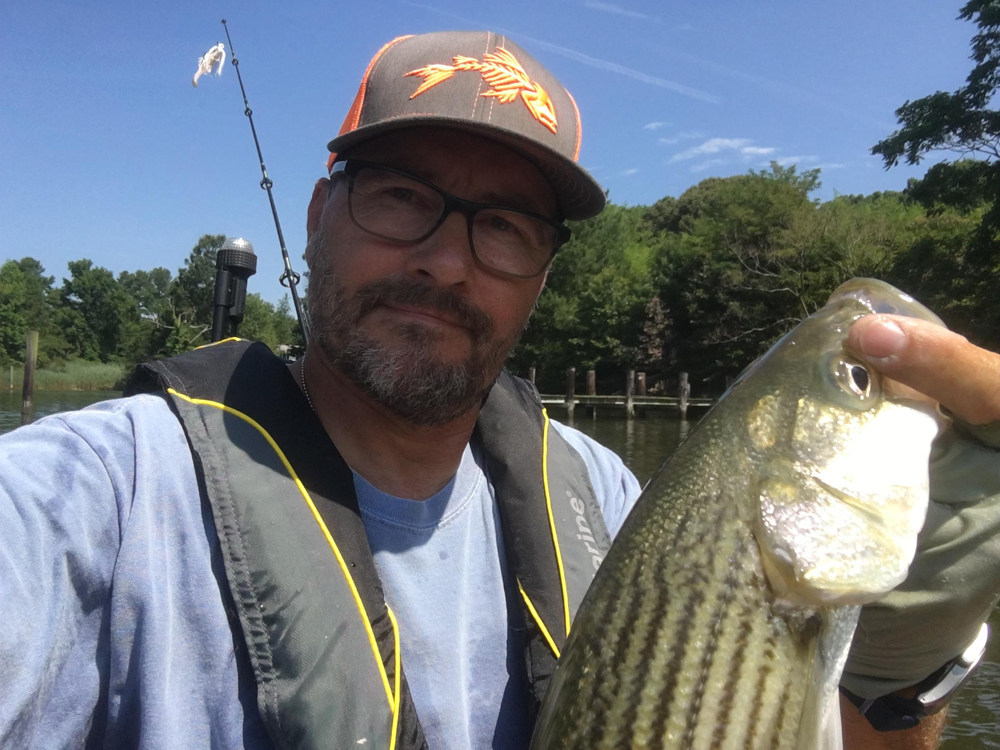It’s four a.m. and I’m sitting here with a cup of coffee getting cold next to me. I take a sip. Picking up my cell phone, I check a few weather apps and plan out my day. A fishing show plays in the background. Looks like some early rain today, with light winds. Yep, that’s my typical morning, getting up somewhere between 3:30 and 5:00 and deciding which fishery to head out to, freshwater or saltwater. What time I should go, the type of tackle to take, or if I’ll throw my kayak on top of the jeep or tow it down the road behind my bike to Mill Creek are a few things to consider.

TRAVEL TIP: You can get a kayak-towing bike rig suitable for local use for a couple-few hundred dollars. Kits are available, or you can get a bicycle tow bar (believe it or not, one option is called the Smart Stick and another is called the Dumb Stick), and purchase wheels for your kayak separately. It’s easy to bike-tow for short distances that don’t involve a lot of stopping and starting (or big hills).
Many of these mornings from summer through the fall, I choose to fish for stripers in the tributaries that feed into the Chesapeake Bay in Southern Maryland. Surprisingly, I catch a large number of fish in feeder creeks and local rivers. Out of the 239 rockfish that I caught in 2018 (yes, I track my catches), over 200 of them came out of these tributaries. It puzzles me that so many people simply cruise over these fish as they head out to the Bay on a boat, passing by the resident fish.
The wind, clouds, sun, and time of day all play into the planning when deciding what area to target. Should you fish the shade of docks and piers, or the riprap points jutting into the creek? The early morning or late evening bite is fairly simple if you spot fish breaking the water’s surface. Either cast directly into the melee or to one side or the other. These fish are normally schoolies and are small, but you may pick up a keeper or two.
SAFETY TIP: Be sure your kayak has a light. Early morning or evening fishing brings on the added challenge of not being run over by powerboats leaving or returning from their outing.
As the day moves on and if the sky is robin-blue, it’s time to cast into the shade of piers, docks, and trees. I typically will cast and make a count to my target depth, somewhere between four and seven feet. Making fan casts, repeat the process until you find the fish. At times casting directly under a dock or pier works, but more often than not casting parallel to them is most effective. I find the fish are waiting to ambush baitfish from the shaded side. If it’s still early morning, I may cast a topwater bait up under a tree hanging over the water. I find that on cloudy days, if I troll past the farthest point that a dock or pier juts out into the creek, the fish hanging in deeper water often attack from below.
TACTICAL TIP: As the sun climbs across the sky, try trolling over riprap points with a rod off each side of your kayak. If you get a bite, stop and make repeated casts on the side of the point that generated the bite. The fish will usually pick one side or the other, depending on tide, wind, and sun.
The tackle I use with these methods is fairly simple: a small saltwater bait cast and a spinning reel setup, spooled up with 30-pound braid line topped off with a six-foot 15-pound fluorocarbon leader. Standard lures are swim baits, often one four-inch and one six-inch white soft-plastic paddle tail rigged on a quarter half ounce jig or skirted jig.
It’s as simple as that. Just remember, as you head out to the Bay, look over your shoulder- that guy in the kayak may be me, hopefully catching a few fish.

By Eric Packard